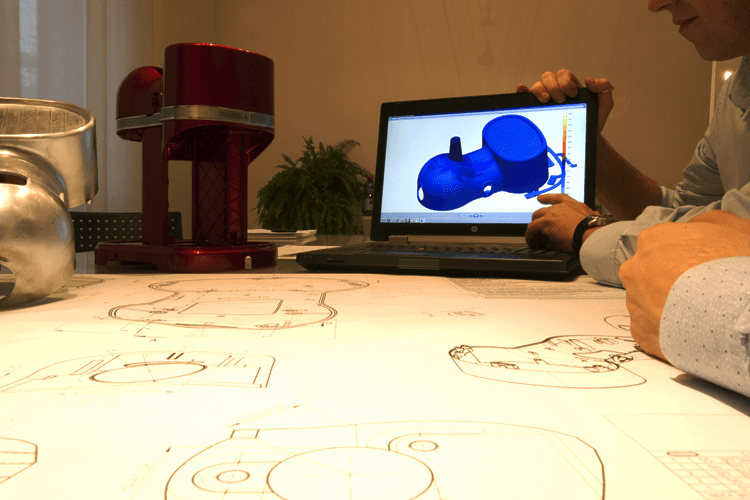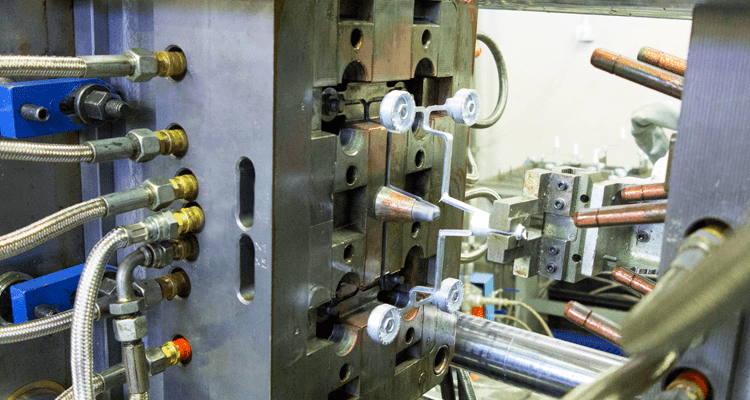As winner of numerous international awards, Bruschi Spa is known for its innovative approach in design and technology. We are glad to share our insights and experiences with the industry members.
What is zinc die casting? What will it be like in 2022?
Zinc die casting is a process that consists in injecting the liquid metal under pressure into a mould, generally made of special steel, and letting it solidify. The die casting technique is the shortest way that leads from the metal in the liquid state to the finished product and has different fields of application (automotive above all, but also electronics, electromechanics, household appliances and in general all sectors that require non-ferrous metallic components).

In this blog post, the goal is to imagine the future trends and scenarios of this process, since modern die casting has embarked on a decisive path of evolution compared to a few decades ago.
Speaking of the zinc die-casting of tomorrow, one cannot ignore the opportunities offered by simulation software.
Numerical simulation in zinc die casting
The numerical simulation of all processes allows adding value to the die casting activity because it allows reducing the time to market, optimizing the testing and verification phase and thus obtaining significant cost savings.
Numerical simulations are normally already considered for the entire filling process (see blog post: "Simulation for HPDC: scrap reduction case study"), but their use could be extended more and more to the general study of the behaviour of the die-cast object during the withdrawal phase or in the detection of any internal tensions, up to analyzing any possible anomaly in its structure and surface.
In this way, the approach to die casting becomes much more structured, moving from empirical criteria (or "trial learn") to data-driven methodologies, capable of allowing cost and resource savings and making more informed decisions.
Furthermore, process and product simulations can serve as a database to lead zinc die casting to the discovery of new application sectors. In Bruschi, for example, simulations on thin thicknesses have given useful results for different fields of use and also in the automotive field, thanks to the simulation activity, new zinc components have been created, which perhaps without this type of analysis would not be never born.
The impact of technology on new die casting processes
Even at the process level, zinc die casting has important innovations in store, especially in Bruschi, and all are related to the contribution of technology to operational needs.
To overcome the cavitation problem, for example, certain analyzes are currently being carried out to minimize its impact, but the use of fluid-dynamics simulations is currently being studied, again through software, in order to be able to modify the feeding channel and the flow system at the origin to prevent this phenomenon from damaging the mould.
With reference to the new die-casting techniques, on the other hand, the attempt to apply the hot runner injection process, typically used in plastic moulding, to the zinc alloy is under consideration. This technique would make it possible to avoid the generation of the so-called “sprue”, reducing the costs in the management of the process connected to its subsequent elimination. The amount of heat saved by the absence of sprue to eliminate would also bring with it important consequences from a green perspective such as the production of less CO2 and therefore greater respect for the environment.
Also as regards the machines, technological progress allows to have more and more sophisticated systems for the control of the main parameters of the die-casting process, also giving the possibility to deepen the correlations between those in input (speed, pressures and characteristics of the injection profile ) with the outgoing ones (weight, burrs, surface quality), through the aid of statistical process analysis software.
Finally, we point out the studies conducted for the production of new sustainable zinc alloys, which are made exclusively through the treatment and recycling of new zamak scrap deriving from the die-casting process. This type of product allows you to embrace the themes of the circular economy, zero waste and recycling which, until a few decades ago, seemed utopia, when compared to the world of foundries. For further information on this topic, we recommend that you contact Bruschi by filling out the form at the link: https://www.bruschitech.com/contact-us-bruschi.

The advantages of zinc die casting
The advantages of zinc die casting, compared to the use of other materials such as aluminium, are numerous.
The first advantage is the greater ease of management of the final surface treatment (chrome plating, painting…). This plus linked to the use of zinc is very useful for all those applications that must meet both aesthetic and functional requirements (for example, resistance to corrosion) and is increasingly in demand on the market.
In addition, zinc die casting has a lower process cost because the zinc alloy mould lasts up to five times that of aluminium, which deteriorates much more quickly as a result of the higher melting temperature (650°C than aluminium against about 400°C of the zamak).
Then, the cycle time of the process is much faster because zinc can be treated in a hot chamber, while aluminium can only be treated in a cold chamber. We refer to the blog post “Zinc Die Casting: A Look into the Future” for the technical explanation of the difference between the two processes. What should be emphasized here is that the hot chamber process, which has always been used in Bruschi for the production of zinc alloy components, allows for greater speed in the production process and an important reduction in mechanical processing subsequent to the die-casting phase.
In conclusion: the future of the zinc die casting market
Despite the current economic situation, the die casting market is showing some encouraging trends. From today to 2026, estimates speak of a global increase of 6%, to which the zamak market also seems to comply.
Surely the technological progress that zinc die casting is undergoing and that passes, as we have said, to the ever-increasing use of software and simulation technology, can help to shift the interest of those potential customers who usually turn to the plastic or aluminium market to the zamak market.
Everything lies in continuous innovation, which can lead to the creation of high-quality zinc alloy die-cast objects from an aesthetic and functional point of view and with an important saving from the point of view of production costs. Bruschi has the ambitious goal of being at the forefront of the die-casting market and is continuously receptive to new techniques and methodologies to be applied to everyday operations to help improve the sector.
